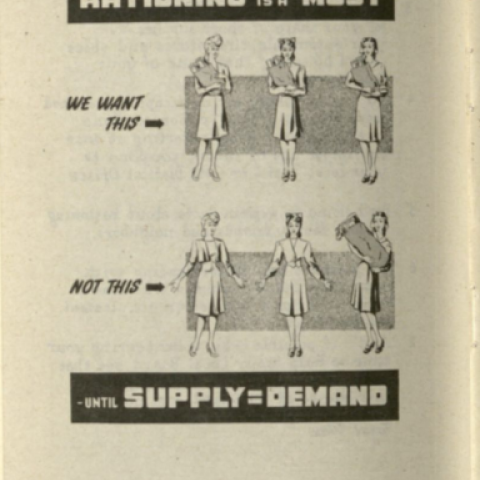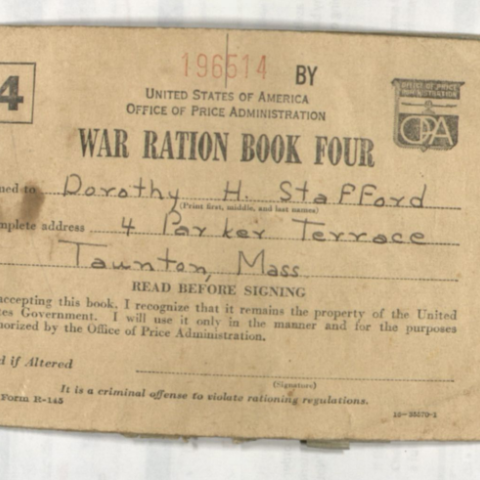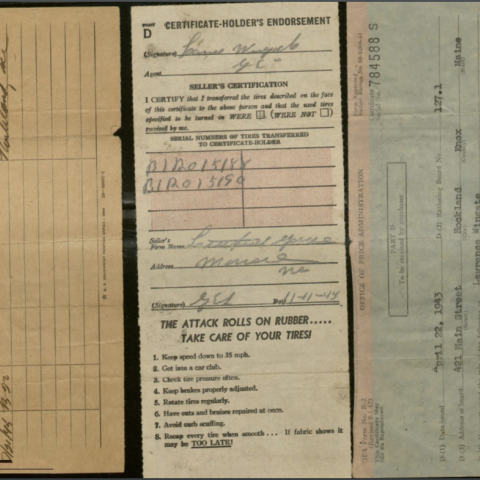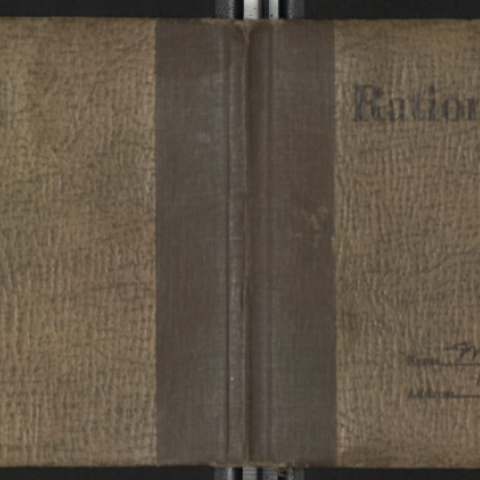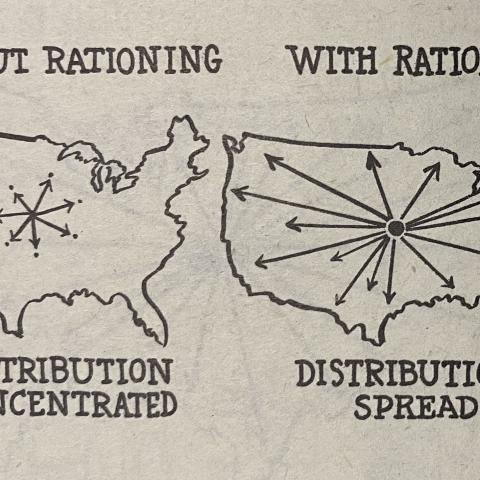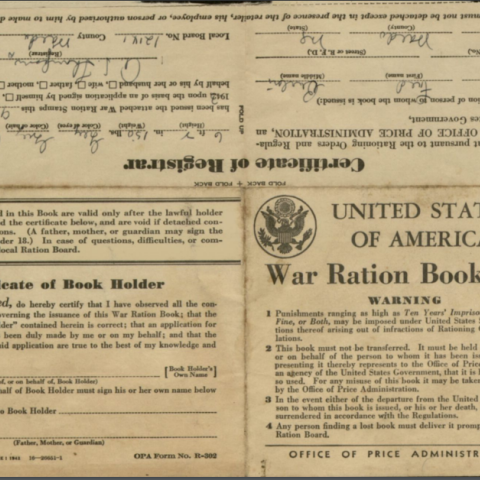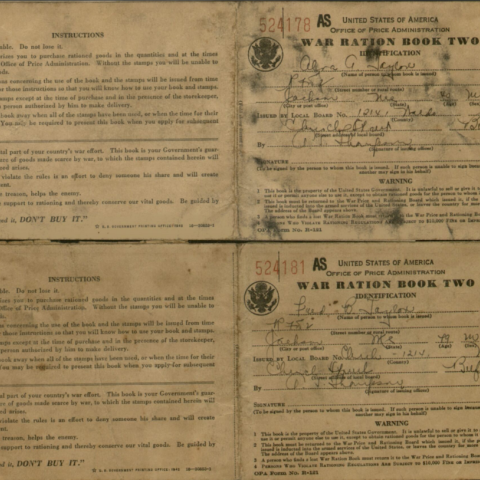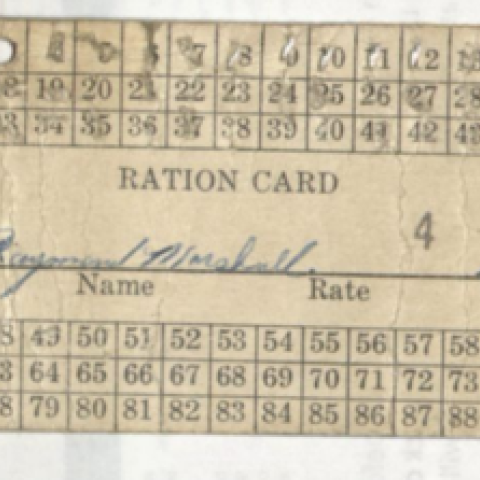Rationing During World War II in the US
by Balasubramanya Ganesh Tumuluri, graduate student studying Mechanical Engineering - August 15, 2023
 World War II stands as a memorable chapter in human history, forever altering the course of nations and leaving a permanent impact on the world. The war revealed a sense of bravery, sacrifice, and resilience that continues to be a part of our consciousness to date. As a step towards the great sacrifice and collective effort of the United States, rationing became a necessary initiative. Special Collections & Archives houses multiple collections related to the events that occurred during World War II. Specifically, the World War II Rationing Collection, the Los Angeles County Federation of Labor Collection and Corporal Raymond Marshall Collection all have items related to rationing during WWII.
World War II stands as a memorable chapter in human history, forever altering the course of nations and leaving a permanent impact on the world. The war revealed a sense of bravery, sacrifice, and resilience that continues to be a part of our consciousness to date. As a step towards the great sacrifice and collective effort of the United States, rationing became a necessary initiative. Special Collections & Archives houses multiple collections related to the events that occurred during World War II. Specifically, the World War II Rationing Collection, the Los Angeles County Federation of Labor Collection and Corporal Raymond Marshall Collection all have items related to rationing during WWII.
The Story of Wartime Rationing is a small booklet included in the Los Angeles County Federation of Labor Collection that explains the importance of rationing during the war brought into play by the Office of Price Administration. The four kinds of rationing programs introduced during the war are outlined: Point Rationing, Uniform Coupon Rationing, Differential Coupon Rationing and Certificate Rationing. 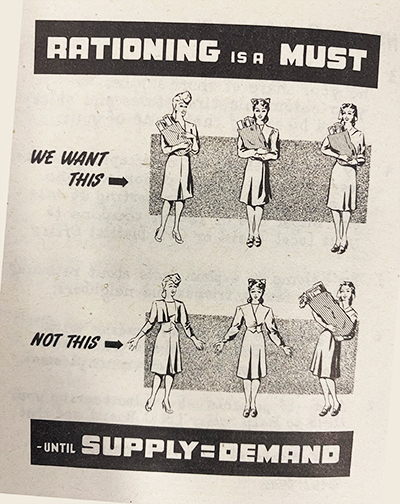 These were implemented depending on the type of commodity a product was classified as. The in-depth description related to the approach of rationing through these methods and rationing of different products such as sugar, meat, canned foods, tires, gasoline, stoves, and dairy products can be found in this booklet. The booklet concludes with the caption, "RATIONING is a MUST – until SUPPLY = DEMAND," which emphasizes the importance of rationing.
These were implemented depending on the type of commodity a product was classified as. The in-depth description related to the approach of rationing through these methods and rationing of different products such as sugar, meat, canned foods, tires, gasoline, stoves, and dairy products can be found in this booklet. The booklet concludes with the caption, "RATIONING is a MUST – until SUPPLY = DEMAND," which emphasizes the importance of rationing.
Rationing aimed to ensure the fair distribution of essential goods and resources among the population regardless of their financial status or social standings. Ration stamps and coins played a crucial role in running this operation steadily during the war. This enabled the government to effectively manage shortages and maintain sufficient supplies for the war and related industries. The use of stamps and coins brought people together, created a sense of camaraderie and a feeling that everyone was contributing to the war effort. The assembled World War II Rationing Collection consists of War Ration Books 1, 2, and 4 issued in the states of Maine and Massachusetts, an application for War Ration Book 3, a gasoline purchase permit, a Maine state driver's license, a War Ration Book holder, OPA coins, and newspaper clippings regarding ration information. As early as January of 1942, the government imposed restrictions on the sale of cars and tires. The first War Ration Book was the "Sugar Book," issued in May 1942. By the close of the War, ration books had been issued for bicycles, gasoline, fuel oil and kerosene, solid fuels, stoves, rubber footwear, shoes, sugar, coffee, processed foods, meats, canned fish, cheese, canned milk, fats, and typewriters. In addition to ration books, OPA coins were issued to retailers in order to give change back for food bought with ration stamps. Blue tokens were used for processed foods, and red tokens for meats and fats. Every family of four was issued a total of 192 blue points and 256 red points. These points were cumulative of the points handed out to each person in the family, starting with 48 blue points and 64 red points each month. The price of the rationed good was dependent on the point value set by OPA and was independent of the selling or retail price of the product. People had to be up to date with the changing point list officially issued by the OPA. The OPA raised or decreased the point value of the product depending on the supply and necessity of the product for the war and related efforts. 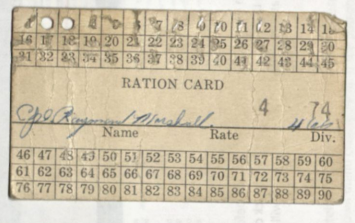
The Corporal Raymond Marshall Collection documents Marshall's experiences as an African-American man serving in an all-black unit during World War II, before the US military was desegregated. The collection consists of a single diary he used from 1942- 1945 with several pieces of ephemera and clippings he tucked between the pages, which includes a ration card issued in his name. Pieces of Japanese money, a gun crew pass, Marshall's motor vehicle operator's license, a luau ticket, Marshall's Order of the Golden Dragon card indicating the date he first crossed the international date line, and other items are among the ephemera in the collection.
Changes to consumer habits that began during the war extended beyond the war years. People adapted and adjusted to the significant sacrifices that had to be made and, adopted alternative ways to meet their needs. They grew victory gardens; repaired, reused and recycled items; and started to live more sustainable lives with meagre resources. The stamps, coins, and ration books served as a reminder of the need to prioritize necessities over luxuries.
The Story of Wartime Rationing will be showcased among other artifacts related to rationing and food in our upcoming exhibit called “Eating The Archives” which will be on exhibit from August 27, 2023 through July 15, 2024.
Image Gallery
Post tagged as: special collections, archives, united states, international
Read more Peek in the Stacks blog entries

